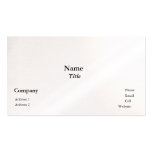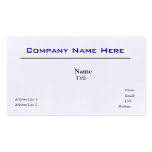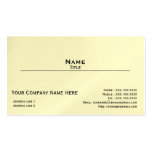Have you heard of gifographics?
It’s OK if you haven’t – they’re just starting to make rounds on the Web, but they’re a pretty big deal and certainly something worth getting excited about.
Gifographics, like their close cousin infographics, are a form of content that combines images and text into a super informative, super valuable visual platform. gifographics, however, have a distinct advantage: they move.
Ideal for providing relevance, information and value to readers, the gifographic is an exciting form of content that is sure to get much more popular in the coming year.
What is a Gifographic?
The term “gifographic” was coined by Neil Patel back in 2014. The term combines the word GIF, which stands for “Graphics Interchange Format” and “Graphic” which refers to visual content.
To put it simply, gifographics are just infographics that combine textual elements with animated visual content in order to form a more interactive and more interesting experience for users.
For an example of a gifographic, here’s one we recently published: A Guide to Writing & Optimizing Great SEO Content.
Why Gifographics Are So Important
Right now, the average Web users are flooded with thousands of pieces of content on a daily basis and, as such, they’re suffering from something known as content fatigue. This leads to good pieces of content getting shuffled past and companies desperate for content producing crappy fluff that clogs up the environment for the rest of us. Some marketers have come to term this “the content sea.”
If this is indeed the environment we’re living in as content marketers, it stands to reason that the content that’s going to stand out will be unique, unexpected, and valuable.
Enter gifographics.
Gifographics combine several of the hottest trends in content marketing right now – visuals, interactive content, and mobile-friendly displays – and combine them into one super-powerful format, ideal for grabbing readers’ attention and promoting social sharing.
Humans are very visual beings – we retain in memory an average of 80 percent of what we do compared to only 30 percent of what we read. Additionally, the brain process visual information about 60,000 times faster than it does textual information, which means that gifographics are the perfect vessel for delivering rapid-fire yet valuable information to consumers.
Because they are so valuable to consumers, gifographics can pose a huge potential for SEO and traffic boosts for marketers. For example, content that features exciting visual components generates 94 percent more views and marketers who optimize their articles with visuals generate 37 percent more engagement than those who do not.
Additionally, 40 percent of online users prefer visual content to text-based content. These statistics provide more than enough proof to conclusively say that gifographics are the content of the future and that marketers can do well to hop aboard the band wagon now.
Benefits of Using Gifographics in Your Content
1. Gifographics are great for SEO
Gifographics are widely regarded as one of the most effective types of content for marketers who want to improve their SEO. This is because gifographics are popular among consumers and have the potential to help companies build authority and provide value to readers.
2. Gifographics grab engagement
Want more engagement from your readers? Build a gifographic. Gifographics make information accessible to consumers and cater to the instant-gratification society we live in today.
3. Gifographics promote sharing
According to Buffer, blog posts that feature animated graphics get more shares than those without graphics. By using a gifographic in your content, it’s possible that you’ll produce more shares from readers and help spread the word about your company far beyond your ordinary reach.
4. Gifographics cater to mobile
Mobile is everything right now and if you’re not optimizing your content for mobile, you’re missing out. Fortunately, gifographics were virtually built for mobile, which means that they’re ideal for sharing, scanning, and scrolling. This will help you I increase your views and drive more conversions.
5. Gifographics add flair to your content
Most marketers use between 12-14 different types of content in their content strategy. The gifographic is a fantastic addition to this. By combining the value of visual and textual content, gifographics have a further reach than other types of content and are better equipped to take your content across the Web.
Conclusion
While infographics, blog posts, and video content are all important, there’s no denying that gifographics are the new kid on the block. By combining all of the viral goodness of video content with all of the informational value of textual content and facts, gifographics are truly a form of super-content that has the potential to go the distance in content marketing. Additionally, gifographics have the potential to pull marketers out of the mire of the content sea and help them create content that gets noticed by readers everywhere. Fresh, new, and exciting, gifographics are a promising form of content that can inform readers while also providing unparalleled value and excitement.







No comments:
Post a Comment